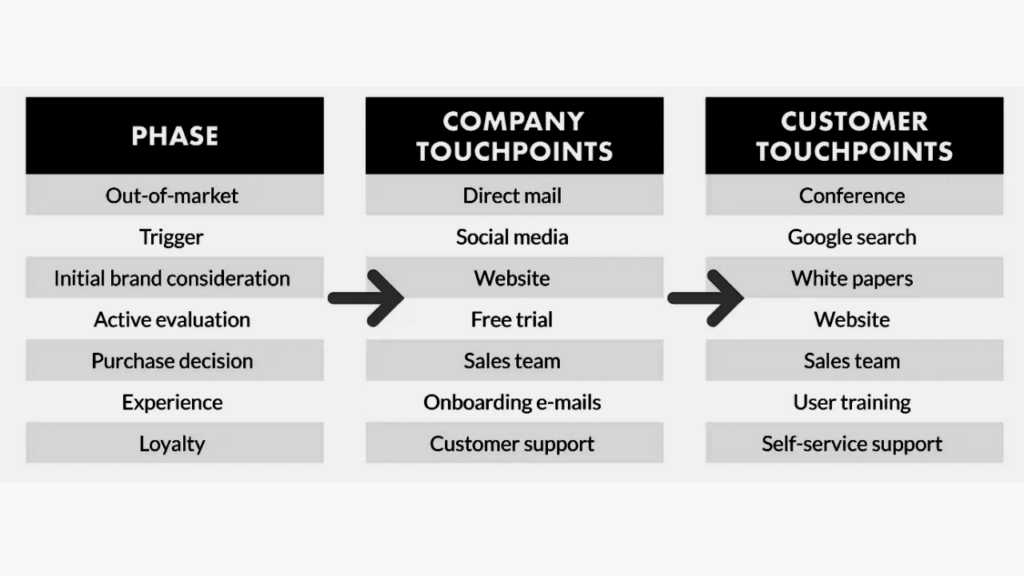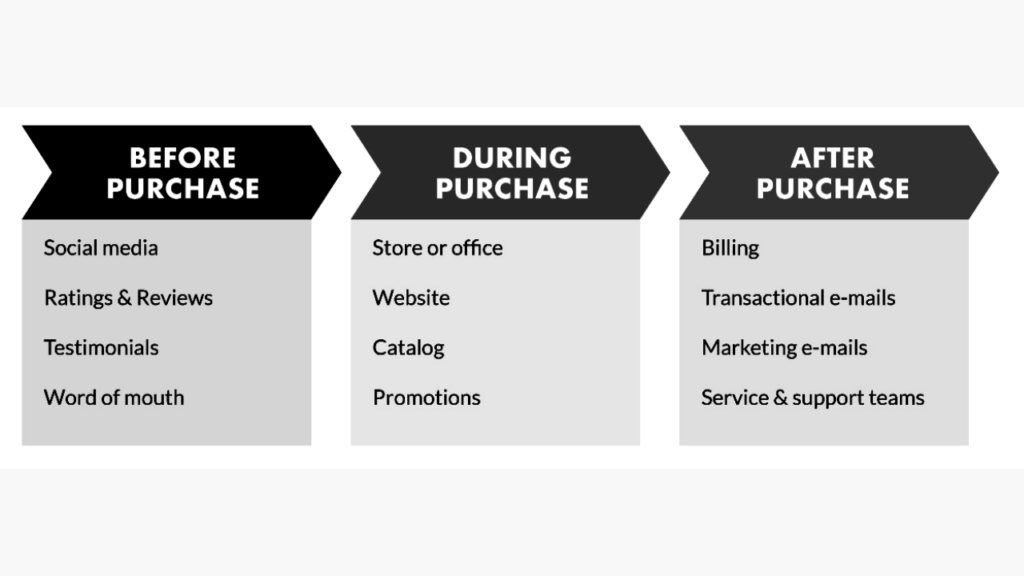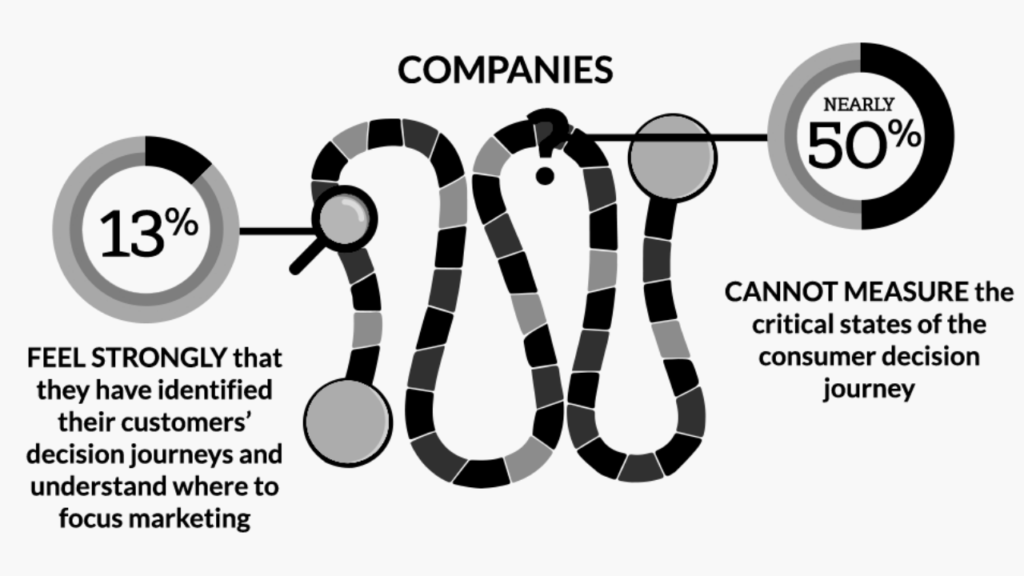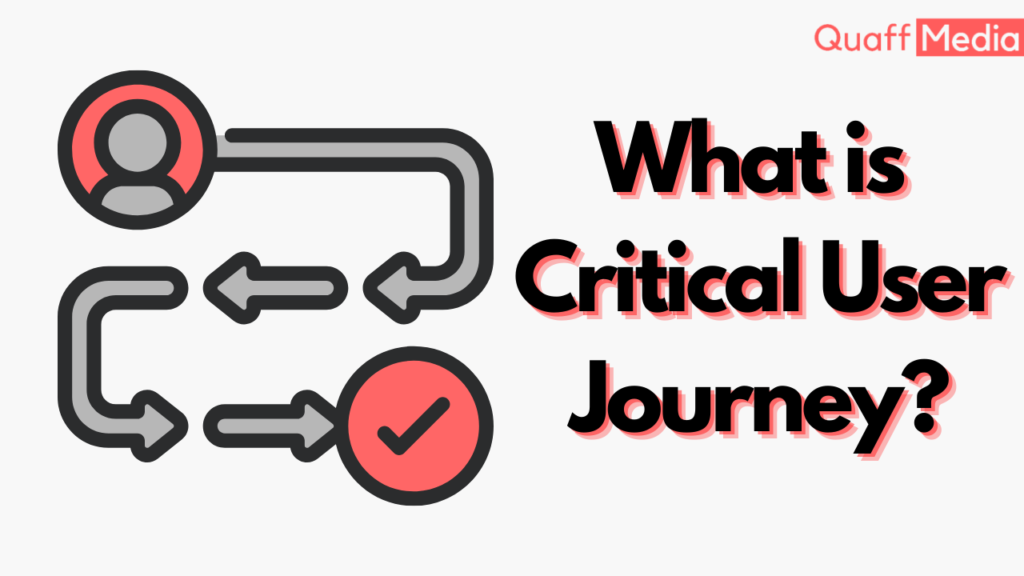- What is a Critical User Journey?
- Map out your Critical User Journey
- Measure your Critical User Journey
- Conclusion
What is a Critical User Journey?

Customer journey is a series of interactions a customer has with your touchpoints to reach a goal or meet a need (e.g., file a claim, manage their 401(k), or submit a complaint). In our discussion of critical journeys, we’re talking about those series of interactions with high traffic (i.e., plenty of customers will take it) or high dollar (i.e., revenues are at stake). Customer satisfaction and loyalty tend to be most affected by these journeys.
Map out your Critical User Journey

Many entrepreneurs create products without first determining the path they want their users to take. When you Google Critical User Journey, you will come across a slew of UX frameworks and user maps. These are fantastic, but they may also be overwhelming and intimidating.
Early-stage startups should start small and understand the ideal user journey they want their product to provide.
A critical user journey should revolve around a single use case with a defined purpose in addition to the context of the user. Click To TweetMeasure your Critical User Journey

After creating a user journey, creators must be brutal and explicit in how they measure it. There is a slew of top-line measures (or KPIs) that all successful firms track, and there are plenty of tools to assist in visualizing them.
Instead, early-stage companies should begin by measuring each step of the journey with actionable top-line KPIs. Begin with the following two metrics: One metric at the top of the funnel that tracks how many new users sign up and take their first action is user acquisition.
Later in the funnel, there is a user engagement gauge that measures the frequency with which these new users interact with the product.
These two measures together determine a product’s activation rate, or how it converts new users into active users. Additional, top-line metrics that are unique to your product and user journey can be added from here.
Top-line indicators that are more tailored to a product’s user journey are better at assisting startups in making decisions
Google Assistant measures user activation by a user making at least one successful query on a specific surface (such as the Pixel phone) in a specific country (such as the U.K.) for a specific feature (such as Ask about “My Day”) within the first two weeks.****
Identify ‘product levers’ that assist users in progressing through their journey.
Many businesses use top-line KPIs but are unable to immediately move any of them across projects and workstreams quantitatively and methodically. Having numbers to measure is only useful if you understand how to manipulate them using the appropriate product levers.
A product lever is a movable and measurable link between the projects your team is working on and the top-line KPIs that matter to you.
For example, one of the Initialized Capital portfolio firms with which I worked closely chose the top-line statistic “L7 Engagement,” which refers to the number of days a user has been engaged on the platform in the previous seven days. “Additional Actions did per User” was chosen as the major product lever to drive this.
They cut the initiatives that didn’t drive additional actions per user (like presenting more in-line ideas, making off-product promotions, sending contextual follow-up notifications, and so on) and kept the ones that did. After a few experiment cycles, they observed their L7 Engagement rate improve, so they decided to focus on another product lever to boost L7 Engagement.
Do not cram in so many features that the “Critical User Journey” gets lost in the mix.
Another common obstacle for all entrepreneurs is the desire to “fix” growth by adding more and more to your product to “see what sticks.” Product addition growth is difficult to track and rarely scalable.
Allow your most enthusiastic users to lead the way.
This may seem self-evident, but occasionally users have already done the legwork for you. Startups should examine their most engaged consumers and learn as much as they can about the behaviors and paths that led them there.
Look backward from a group of your most engaged users. Determine what behaviors they made on the first day, week, month, and following periods to arrive at their current state. At each step of the journey, identify these activities as crucial moments you want new or casual users to take.
For example, if taking four actions in the first week resulted in users being more engaged in the second week, new users should prioritize these actions over anything else in their first week.
Create engagement loops around these actions to encourage people to keep going down the route after completing one. Track and measure how many users are taking these activities at each stage of the journey to get a complete view of your product’s engagement.
Conclusion
You should try to recreate your best user journey for others if you know exactly what actions and stages they did.
Defining a single ‘Critical User Journey’ for your product is a good place to start as it will serve as a starting point for defining metrics, clarifying what users need to do at each step, and assisting in prioritizing the necessary product levers for long-term growth.
When you are ready, expand this framework to include various user experiences that deepen existing user involvement or broaden use cases to reach new audiences.

